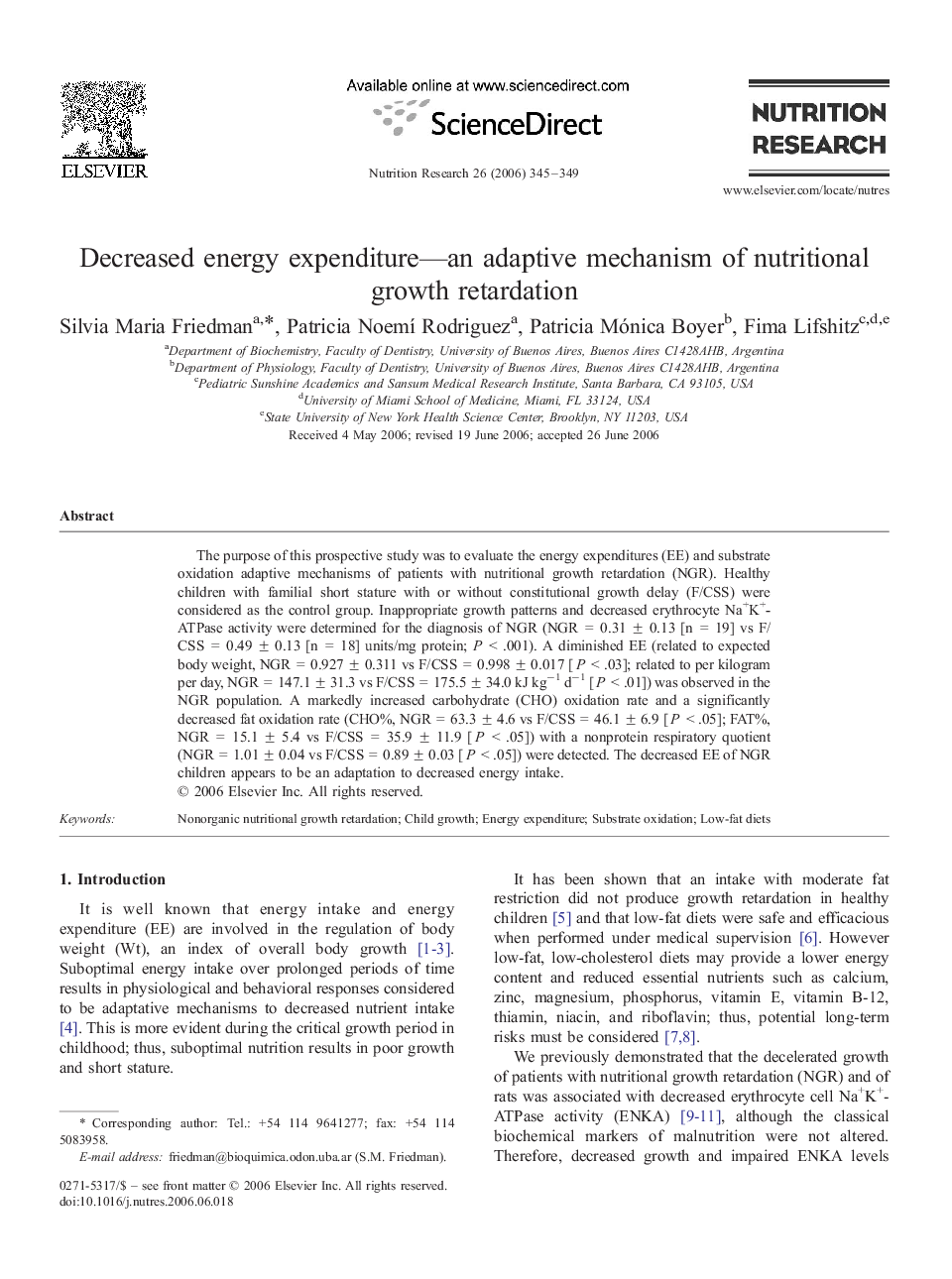| Article ID | Journal | Published Year | Pages | File Type |
|---|---|---|---|---|
| 2809527 | Nutrition Research | 2006 | 5 Pages |
The purpose of this prospective study was to evaluate the energy expenditures (EE) and substrate oxidation adaptive mechanisms of patients with nutritional growth retardation (NGR). Healthy children with familial short stature with or without constitutional growth delay (F/CSS) were considered as the control group. Inappropriate growth patterns and decreased erythrocyte Na+K+-ATPase activity were determined for the diagnosis of NGR (NGR = 0.31 ± 0.13 [n = 19] vs F/CSS = 0.49 ± 0.13 [n = 18] units/mg protein; P < .001). A diminished EE (related to expected body weight, NGR = 0.927 ± 0.311 vs F/CSS = 0.998 ± 0.017 [P < .03]; related to per kilogram per day, NGR = 147.1 ± 31.3 vs F/CSS = 175.5 ± 34.0 kJ kg−1 d−1 [P < .01]) was observed in the NGR population. A markedly increased carbohydrate (CHO) oxidation rate and a significantly decreased fat oxidation rate (CHO%, NGR = 63.3 ± 4.6 vs F/CSS = 46.1 ± 6.9 [P < .05]; FAT%, NGR = 15.1 ± 5.4 vs F/CSS = 35.9 ± 11.9 [P < .05]) with a nonprotein respiratory quotient (NGR = 1.01 ± 0.04 vs F/CSS = 0.89 ± 0.03 [P < .05]) were detected. The decreased EE of NGR children appears to be an adaptation to decreased energy intake.
